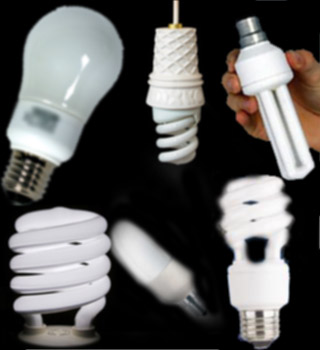
Up close exposure to green light bulbs actually puts us at greater risk of skin damage. That’s what the Health Protection Agency (HPA), a British government agency claim. They warn that close exposure to energy saving light bulbs may cause reddening of the skin and hence skin damage due to ultra violet light emissions.
Chief executive Justin McCracken, remarked, “At the exposure levels we are talking about, the worst effect that we believe there is as result of our investigation is that people could have some short-time reddening of their skin. We do not believe that these lights pose any significant risk in terms of skin cancer. This is precautionary advice and people should not be thinking of removing these energy-saving light bulbs from their homes. In situations where people are not likely to be very close to the bulbs for any length of time, all types of compact fluorescent light bulbs are safe to use.â€
To test the effects of these bulbs, the HPA conducted a study that checked the level of harm caused by the duration of exposure to these eco bulbs. In the course of the study, experts found that individuals who spend four hours a day or more at almost 8†from the bulb cross existing guidelines on exposure. If a person is at a 1†distance from the bulb, the UV level exposure would be equal to that of being outside in the UK on a sunny summer’s day.
The study further mentions that a distance of more than 12†away, the UV level is virtually safe. Researchers warn that an unencapsulated energy-saving bulb closer than 30cm to the body puts us at increased UV radiation risk. So a person should not use open bulbs closer than one foot to the body for more than one hour a day or should switch to encapsulated bulbs suggest the agency. The HPA warns that those who use reading lamps on their bedside tables could especially be at the UV risks.
The HPA reveals that open type of bulbs that have no glass covering emit UV radiation 20% higher than guideline levels. In the HPA tests of 20 encapsulated and 53 unencapsulated bulbs, nearly 1 in 5 unencapsulated bulbs was found to have UV radiation emissions. The agency adds that encapsulated fluorescent light bulbs, surrounded by a glass cover resembling traditional bulbs, do not emit high levels of UV.
This is not really the first time these bulbs have been in the news for the wrong reasons. Critics have earlier remarked that the light saving bulbs contain mercury, which may cause harm if the bulb breaks and also suggest that the flickering of the bulb can cause problems for migraine sufferers and problems for epileptics.
Since their introduction over 20 million green bulbs are sold every year, about 13% of the total, and they last around 10,000 hours nearly 12 times longer than traditional bulbs Costing about £3 to £4 each, compared to 50p for a normal bulb, manufacturers assert they save £100 on an electricity bill over their lifetime. While these bulbs do not pose any cancer risk as of now the HPA advises people against spending more than an hour within 30 cms of some energy-saving lights to avoid skin damage.
The research is due to be published in an academic journal.
